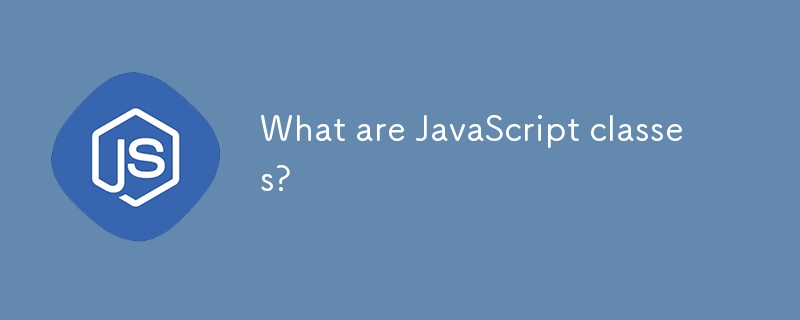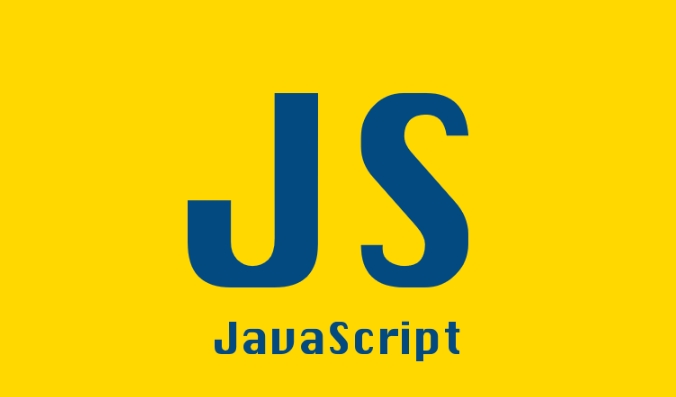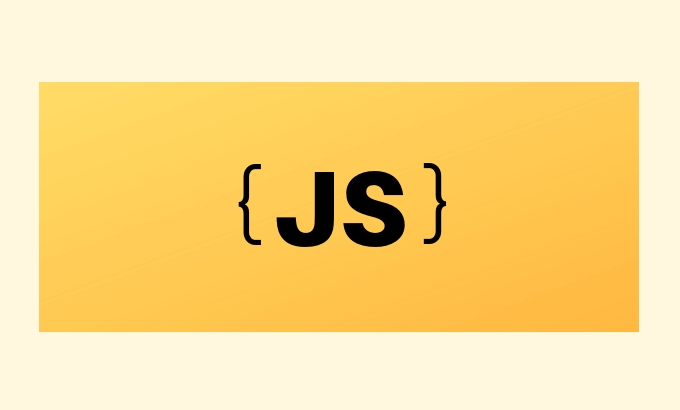JavaScript classes provide a structured way to create objects with shared properties and methods, introduced in ES6 as syntactic sugar over JavaScript’s prototype-based model. 1. Classes simplify object creation and inheritance for developers familiar with class-based languages. 2. They use constructors for initialization, methods for functionality, and support static methods and inheritance via extends and super. 3. Inheritance allows reusing code by building new classes based on existing ones. 4. Classes can be defined using declarations or expressions, with declarations being hoisted and expressions not.

JavaScript classes are a way to create objects with shared properties and methods, making it easier to organize code that’s based on object-oriented principles. They were introduced in ES6 (2015) as a cleaner, more familiar syntax for developers coming from other class-based languages like Java or Python.

How JavaScript Classes Work
Before classes were added, JavaScript used constructor functions and prototypes to handle object creation and inheritance. Classes in JavaScript are essentially syntactic sugar over this prototype-based model.
Here's a basic example:

class Car {
constructor(brand) {
this.brand = brand;
}
present() {
return 'I have a ' this.brand;
}
}
const myCar = new Car('Toyota');
console.log(myCar.present()); // I have a ToyotaThis creates a Car class with a constructor and a method. You can then make instances of the class using new.
Key Features of Classes
- Constructor method – This is automatically called when a new instance is created.
- Methods – You can define any number of methods inside a class.
- Static methods – These belong to the class itself, not instances.
- Inheritance – You can extend one class from another using
extends.
Using Inheritance with extends and super
One of the main benefits of classes is being able to reuse code through inheritance. For example:

class Model extends Car {
constructor(brand, model) {
super(brand);
this.model = model;
}
show() {
return this.present() ', it’s a ' this.model;
}
}extendslets you build a new class based on an existing onesuper()calls the parent class’s constructor- The child class can add or override methods
This makes it easy to build complex object hierarchies while keeping your code DRY.
Class Expressions vs Class Declarations
You can define classes in two main ways:
Class declarations
class Dog { /* ... */ }Class expressions
const Dog = class { /* ... */ };They behave similarly, but declarations are hoisted (you can use them before they’re defined in code), while expressions are not.
Also, unlike functions, even if you declare a class with a name, its identifier is only available inside the class body.
That’s the core idea behind JavaScript classes — they provide a more structured and readable way to work with objects and inheritance. Not too different from how things work under the hood, but definitely easier to write and understand once you get the hang of it.
The above is the detailed content of What are JavaScript classes?. For more information, please follow other related articles on the PHP Chinese website!

Hot AI Tools

Undress AI Tool
Undress images for free

Undresser.AI Undress
AI-powered app for creating realistic nude photos

AI Clothes Remover
Online AI tool for removing clothes from photos.

Clothoff.io
AI clothes remover

Video Face Swap
Swap faces in any video effortlessly with our completely free AI face swap tool!

Hot Article

Hot Tools

Notepad++7.3.1
Easy-to-use and free code editor

SublimeText3 Chinese version
Chinese version, very easy to use

Zend Studio 13.0.1
Powerful PHP integrated development environment

Dreamweaver CS6
Visual web development tools

SublimeText3 Mac version
God-level code editing software (SublimeText3)

Hot Topics
 Java vs. JavaScript: Clearing Up the Confusion
Jun 20, 2025 am 12:27 AM
Java vs. JavaScript: Clearing Up the Confusion
Jun 20, 2025 am 12:27 AM
Java and JavaScript are different programming languages, each suitable for different application scenarios. Java is used for large enterprise and mobile application development, while JavaScript is mainly used for web page development.
 Javascript Comments: short explanation
Jun 19, 2025 am 12:40 AM
Javascript Comments: short explanation
Jun 19, 2025 am 12:40 AM
JavaScriptcommentsareessentialformaintaining,reading,andguidingcodeexecution.1)Single-linecommentsareusedforquickexplanations.2)Multi-linecommentsexplaincomplexlogicorprovidedetaileddocumentation.3)Inlinecommentsclarifyspecificpartsofcode.Bestpractic
 How to work with dates and times in js?
Jul 01, 2025 am 01:27 AM
How to work with dates and times in js?
Jul 01, 2025 am 01:27 AM
The following points should be noted when processing dates and time in JavaScript: 1. There are many ways to create Date objects. It is recommended to use ISO format strings to ensure compatibility; 2. Get and set time information can be obtained and set methods, and note that the month starts from 0; 3. Manually formatting dates requires strings, and third-party libraries can also be used; 4. It is recommended to use libraries that support time zones, such as Luxon. Mastering these key points can effectively avoid common mistakes.
 Why should you place tags at the bottom of the ?
Jul 02, 2025 am 01:22 AM
Why should you place tags at the bottom of the ?
Jul 02, 2025 am 01:22 AM
PlacingtagsatthebottomofablogpostorwebpageservespracticalpurposesforSEO,userexperience,anddesign.1.IthelpswithSEObyallowingsearchenginestoaccesskeyword-relevanttagswithoutclutteringthemaincontent.2.Itimprovesuserexperiencebykeepingthefocusonthearticl
 JavaScript vs. Java: A Comprehensive Comparison for Developers
Jun 20, 2025 am 12:21 AM
JavaScript vs. Java: A Comprehensive Comparison for Developers
Jun 20, 2025 am 12:21 AM
JavaScriptispreferredforwebdevelopment,whileJavaisbetterforlarge-scalebackendsystemsandAndroidapps.1)JavaScriptexcelsincreatinginteractivewebexperienceswithitsdynamicnatureandDOMmanipulation.2)Javaoffersstrongtypingandobject-orientedfeatures,idealfor
 JavaScript: Exploring Data Types for Efficient Coding
Jun 20, 2025 am 12:46 AM
JavaScript: Exploring Data Types for Efficient Coding
Jun 20, 2025 am 12:46 AM
JavaScripthassevenfundamentaldatatypes:number,string,boolean,undefined,null,object,andsymbol.1)Numbersuseadouble-precisionformat,usefulforwidevaluerangesbutbecautiouswithfloating-pointarithmetic.2)Stringsareimmutable,useefficientconcatenationmethodsf
 What is event bubbling and capturing in the DOM?
Jul 02, 2025 am 01:19 AM
What is event bubbling and capturing in the DOM?
Jul 02, 2025 am 01:19 AM
Event capture and bubble are two stages of event propagation in DOM. Capture is from the top layer to the target element, and bubble is from the target element to the top layer. 1. Event capture is implemented by setting the useCapture parameter of addEventListener to true; 2. Event bubble is the default behavior, useCapture is set to false or omitted; 3. Event propagation can be used to prevent event propagation; 4. Event bubbling supports event delegation to improve dynamic content processing efficiency; 5. Capture can be used to intercept events in advance, such as logging or error processing. Understanding these two phases helps to accurately control the timing and how JavaScript responds to user operations.
 What's the Difference Between Java and JavaScript?
Jun 17, 2025 am 09:17 AM
What's the Difference Between Java and JavaScript?
Jun 17, 2025 am 09:17 AM
Java and JavaScript are different programming languages. 1.Java is a statically typed and compiled language, suitable for enterprise applications and large systems. 2. JavaScript is a dynamic type and interpreted language, mainly used for web interaction and front-end development.






